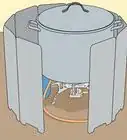This article was co-authored by wikiHow Staff. Our trained team of editors and researchers validate articles for accuracy and comprehensiveness. wikiHow's Content Management Team carefully monitors the work from our editorial staff to ensure that each article is backed by trusted research and meets our high quality standards.
This article has been viewed 139,602 times.
Learn more...
A hangi is a traditional Maori method of cooking food underground using hot stones, and it is commonly practised throughout Aotearoa (New Zealand). The food has warm, earthy tones, and is a firm favorite for social gatherings throughout New Zealand. A hangi involves setting up the pit, heating the stones, preparing the food, and then placing the food into the pit to cook.
Steps
Setting up the Pit
-
1Gather volcanic stones for the hangi. A hangi for 25 people will require enough volcanic stones to fill a 1 m (3.3 ft) in diameter hole, around 0.5 m (1.6 ft) deep. Non-volcanic stones will crack and explode when heated, which can be dangerous.
- Use a search engine to find where you can collect volcanic rocks in your area.
-
2Collect pieces of hardwood for the hangi. Wood for a hangi must be untreated, and you will need 45 pieces that are 1 m (3.3 ft) long and 5-8 cm (2-3 in) wide. A slow burning wood such as mānuka or macrocarpa works well.
- A hangi will only be successful if the wood used takes a long time to burn, which is why hardwoods are necessary.
Advertisement -
3Get 3 food baskets. Food baskets for hangi are usually wire trays with sides, but they can be made out of a variety of different materials. Baskets that are made from small chicken mesh, or welded perforated steel containers are common.
- The number of baskets that you will need will depend on how many people you are feeding. Three baskets will be enough for 25 people.
- Typically the food is divided into the three baskets, one of red meat, the next poultry, and the last for vegetables.
-
4Dig the hole slightly bigger that the stacked food baskets. 200-300mm (7.9-11.8 in) deeper and 200mm (7.9 in) wider and longer than the baskets works well. The hole will need to be slightly larger than the food baskets when they are stacked, so that there is enough room for sacks to be placed on the sides which will protect the food from the embers and dirt. [1]
- A hole that’s too deep or big will make it difficult to retrieve the food safely when it’s ready.[2]
- Overall the hole will be big enough to hold the food baskets, sacks, and stones.
-
5Pile the wood and volcanic stones on the ground to make a fire stack. There is no particular order to stack the wood and stones, and all that matters is that there is enough room beneath the stack to start a fire, and that the stones are evenly distributed throughout the stack. The fire stack should be located next to the pit, so that you can easily transfer the hot stones.[3]
- If you stack the wood and stones the day before you plan to have the hangi, make sure that you cover the stack with a tarpaulin overnight to prevent it getting wet.
-
6Light the wood in the fire stack in 3-4 places. Light a match and set alight 3-4 corners of the fire stack. If the wood doesn't show flames immediately, blow gently on the smouldering area to help it along.[4]
- The fire will spread throughout the stack of wood and stones.
Adding Meat and Vegetables to the Baskets
-
1Let the fire burn for 3-5 hours before you start cooking. This lets the stones gather enough heat to be able to eventually cook the food. You will know that the stones are ready to use when they are visibly white.[5]
- While the fire is burning, make sure that somebody is watching it at all times. This will ensure the safety of everyone, and someone can also make sure that the stones are placed back into the fire if they fall out.
- Watch out for a changing wind direction, as this could blow the stack over.
- If the stones are particularly large and are having trouble heating evenly, rotate them during this process.[6]
-
2Peel and cut the vegetables while the fire is burning. Peel the potatoes, carrots, and kumara, and then chop them into pieces around 13 cm (5 in) in length, or the size of your palm. Aim to have 1 potato, 1 carrot, and 1 kumara per person.[7]
- Pieces that are too big won’t cook properly, but pieces that are too small will turn mushy.[8]
- If you want to add a seasoning to your hangi, sprinkle some garlic powder or dried herbs generously over the vegetables.
-
3Get the meat for the hangi. Common meats that are used are pork, chicken, and lamb. Aim for around 400g (0.88 lb) of meat per person. Make sure that all frozen meats are fully thawed.[9]
- You can use many types of meat for a hangi. Chicken thighs or whole chickens are commonly cooked, and you can also use whole roast sized pieces of other types of meat. As long as the pieces aren't tiny and won't cook too fast, they will be fine inside the hangi.[10]
- You can season your meat at this stage if you prefer. Generous salt and pepper sprinklings are common, but garlic with herbs like rosemary and sage are also common.[11]
-
4Line the food baskets with foil or banana leaves. Place a thin layer on the bottom of the food baskets, which will help to protect the vegetables and meat from the dirt. Modern hangi is generally lined with tin foil, but for a more traditional approach try cabbage or banana leaves.[12]
-
5Place the meat and vegetables in the lined food baskets. Usually separate baskets are used for meat and vegetables, but you can put them together if you wish. Place the meat and vegetables pieces into the food baskets, with a single layer in each.[13]
- Using only a single layer in each will help the food to cook thoroughly.
Lowering the Baskets into the Hangi
-
1Use long shovels to transport the hot rocks from the fire into the hangi. When the volcanic stones have turned white, move them carefully to the base of the hangi pit. Remove any remaining leftover wood pieces before you put the rocks into the pit. Place the stones side by side in the pit, with as few gaps between the stones as possible.[14]
- This part of the hangi process needs to be done as quickly as possible to prevent the rocks from cooling. Rotate people for transporting the rocks as it is a tiring process.
-
2Soak 5 sacks and 1 sheet of material in water. Do this while the rocks are being moved from the fire and into the pit. Make sure that the sacks are thoroughly wet. This will help to create the steam that is necessary for the hangi to cook.
- Mutton cloth, a table cloth, or a bed sheet are ideal types of material to use for the sheet.
- The size and material of the sacks doesn't matter. As long as you have enough sacks to cover the stacked food baskets, then this is all that matters.
- Make sure that the sheet and sacks that you use are clean.
-
3Slap the hot rocks with the wet sacks gently a few times. This will help to create steam for the hangi. Make sure not to leave the wet sacks on the hot rocks for too long, as only momentarily is best.[15]
-
4Put the food baskets on the hot rocks. Place the red meat and poultry in the pit first, closest to the rocks. Then place the vegetable basket on last, so that it is closest to the surface.[16]
- This order is necessary because the meat requires being closer to the heat than the vegetables.
-
5Place a wet sheet of material over the food baskets. Make sure that the sheet is wide enough to fully cover the stack of food baskets. The sheet needs to drape far enough down to cover the bottom basket almost fully, but without touching the hot rocks.[17]
- Make sure that the sheet is still wet and hasn’t dried before you had a chance to put it on the food baskets. Soak it again if necessary.
-
6Cover the food baskets and wet sheet with the wet sacks. Place the wet sacks over the food, making sure that as much of the area is covered as possible. Make sure that the first sack covers the very top of the food, as this will be the last one that is removed. Then place the rest of the sacks covering the sides of the baskets until all of the food is protected from the dirt.[18]
-
7Cover the pit with dirt. Start covering the pit from the edges, and work your way evenly over the food baskets.When the pit is fully covered, gently smooth down the dirt on top of the hangi. If any steam is released through the top, place more dirt on this area to prevent the steam from being released.[19]
- This will ensure that the dirt doesn’t cave in onto the food.
Retrieving the Hangi
-
1Scrape the dirt off slowly after 3 hours. Use a spade to carefully scrape the dirt off the top of the hangi. Continue this until you see the sacks.[20]
-
2Peel the sacks off the hangi. Start with the outermost sack, and remove each layer until you reach the initial sack. Although the sacks will be hot, you will be able to remove them with your bare hands.[21]
- When removing the final few sacks, be careful not to let any dirt fall onto the food.
-
3Remove the 3 baskets of food. Two people are required for each basket, as it will be very heavy and warm. Use gloves or towels to lift the hangi basket out, and carry it away from the dirt to a table to serve.[22]
-
4Take the food out of the baskets and serve it. Carve out the meat into slices or portions. Serve the different types of meat on a plate with a few pieces of the vegetables.
Community Q&A
-
QuestionCan I use bricks instead of stones?
 Community AnswerYou cannot use bricks; you can only use lumps of steel or volcanic rock.
Community AnswerYou cannot use bricks; you can only use lumps of steel or volcanic rock. -
QuestionCan the hangi be underground longer, say 6 hours?
 Community AnswerYes, a hangi can be underground for 6 hours but it might burn if you have a smaller fire than usual.
Community AnswerYes, a hangi can be underground for 6 hours but it might burn if you have a smaller fire than usual. -
QuestionShould the food be wrapped in mutton cloth inside the tinfoil?
 Community AnswerIt doesn't have to be, but to be extra safe, you can. This prevents burning or bugs getting into it.
Community AnswerIt doesn't have to be, but to be extra safe, you can. This prevents burning or bugs getting into it.
Warnings
- Be very careful when preparing and working with the hangi, as it will be very hot! Always use long shovels to move the hot stones, and make sure that your feet are covered.[24]⧼thumbs_response⧽
Things You’ll Need
- Volcanic stones
- Hardwood pieces
- Food baskets
- Long shovels
- Knife
- Tinfoil
- Cabbage leaves
- Banana leaves
- Sacks
- Mutton cloth
- Tablecloth
- Bed sheet
References
- ↑ http://www.maoritelevision.com/tv/shows/tradition-on-plate/recipes/episode-3-heke-hangi
- ↑ http://www.maori.cl/Hangi.htm
- ↑ http://www.maori.cl/Hangi.htm
- ↑ http://www.maori.cl/Hangi.htm
- ↑ http://www.maori.cl/Hangi.htm
- ↑ http://www.maoritelevision.com/tv/shows/tradition-on-plate/recipes/episode-3-heke-hangi
- ↑ http://www.maoritelevision.com/tv/shows/tradition-on-plate/recipes/episode-3-heke-hangi
- ↑ http://www.maori.cl/Hangi.htm
- ↑ http://www.maoritelevision.com/tv/shows/tradition-on-plate/recipes/episode-3-heke-hangi
- ↑ https://www.mpi.govt.nz/dmsdocument/1057-food-safety-practices-in-preparing-and-cooking-a-hangi-he-whakatairanga-i-nga-ahuatanga-mahi-mo-te-tunu-hangi&sa=U&ved=0ahUKEwj6_K6ljeLcAhXYdd4KHSpcDIYQFggMMAM&client=internal-uds-cse&cx=008953293426798287586:mje_rkjv8m0&usg=AOvVaw0Z0_S1yEy9WRI7gZoQAT5i
- ↑ http://www.maori.cl/Hangi.htm
- ↑ http://www.maori.cl/Hangi.htm
- ↑ https://www.mpi.govt.nz/dmsdocument/1057-food-safety-practices-in-preparing-and-cooking-a-hangi-he-whakatairanga-i-nga-ahuatanga-mahi-mo-te-tunu-hangi&sa=U&ved=0ahUKEwj6_K6ljeLcAhXYdd4KHSpcDIYQFggMMAM&client=internal-uds-cse&cx=008953293426798287586:mje_rkjv8m0&usg=AOvVaw0Z0_S1yEy9WRI7gZoQAT5i
- ↑ http://www.maori.cl/Hangi.htm
- ↑ http://www.maori.cl/Hangi.htm
- ↑ http://www.maori.cl/Hangi.htm
- ↑ http://www.maori.cl/Hangi.htm
- ↑ http://www.maori.cl/Hangi.htm
- ↑ http://www.maori.cl/Hangi.htm
- ↑ http://www.maori.cl/Hangi.htm
- ↑ http://www.maori.cl/Hangi.htm
- ↑ http://www.maori.cl/Hangi.htm
- ↑ http://www.maori.cl/Hangi.htm
- ↑ http://www.maori.cl/Hangi.htm
About This Article
Putting down a hangi will let you cook food underground in a few hours. First, you’ll need to dig a hole in the ground. Then, on the ground near the hole, stack wood with stones on top. Light the wood in a few places and leave it for 3 to 5 hours to heat up the stones. In the meantime, line metal baskets with foil and fill them with food. You’ll also need to soak a sheet and sacks in water. When the stones are hot enough, use a shovel to move the stones into your hole, place your food baskets on top, cover them with your wet sheet and sacks, and cover the pit with dirt. After 3 hours, uncover the baskets and your food should be cooked and ready to eat. For more tips, including how to layer your food so any meet cooks properly, read on!
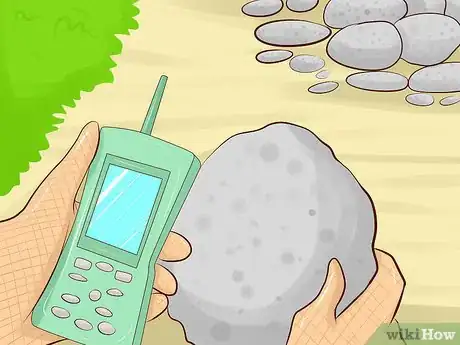
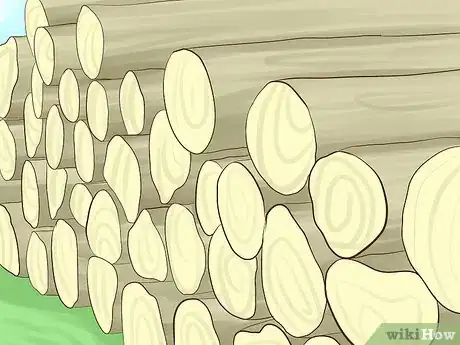
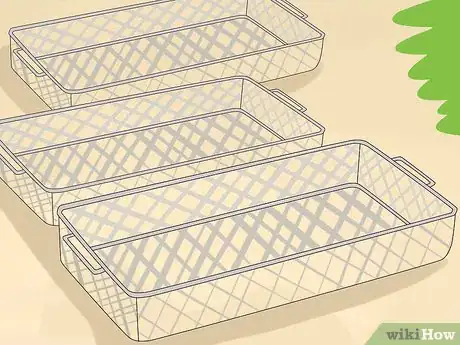
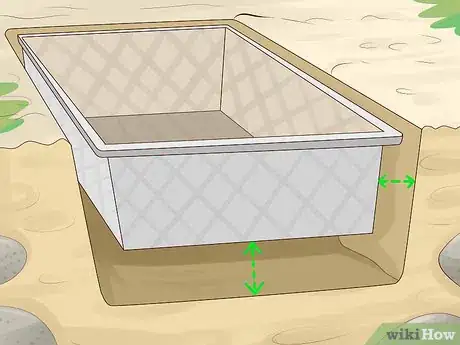
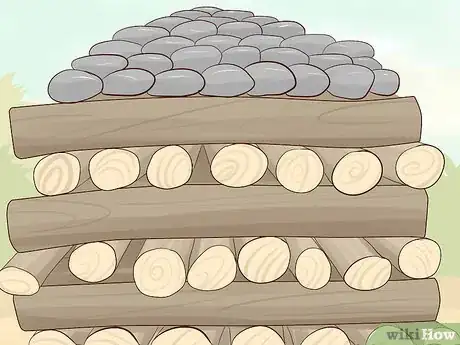
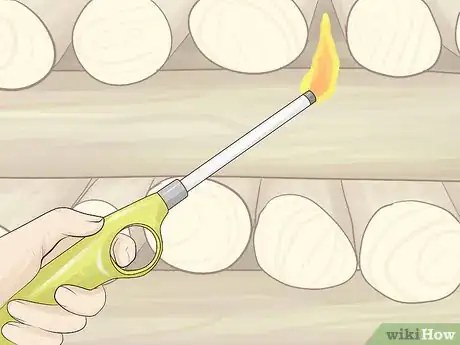
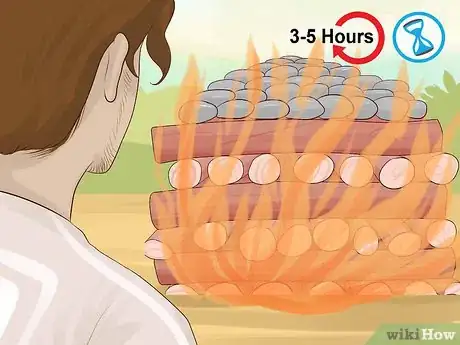
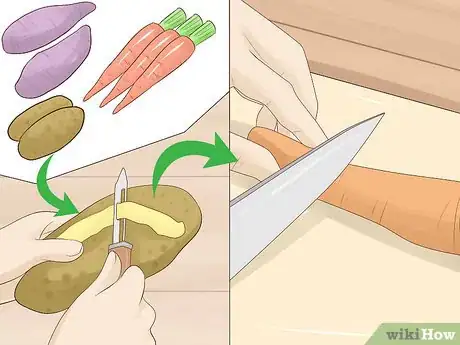
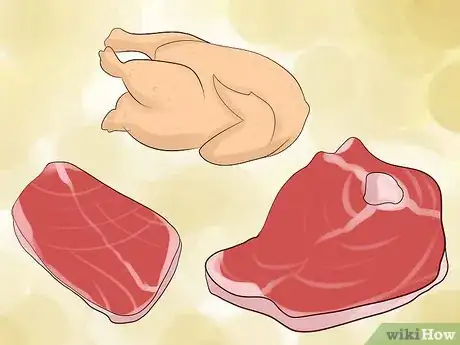
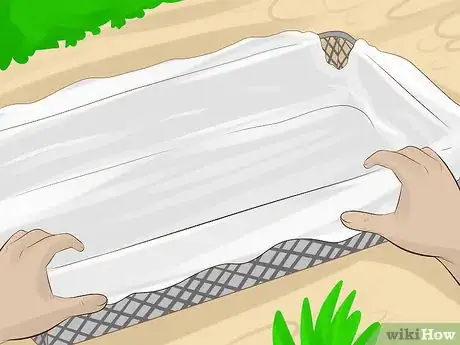
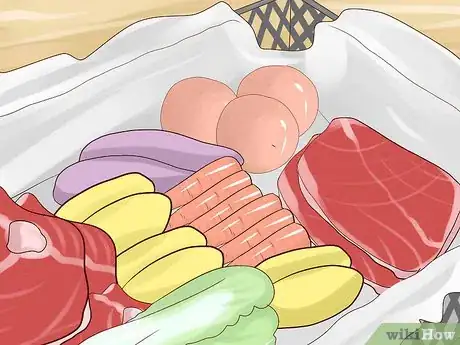
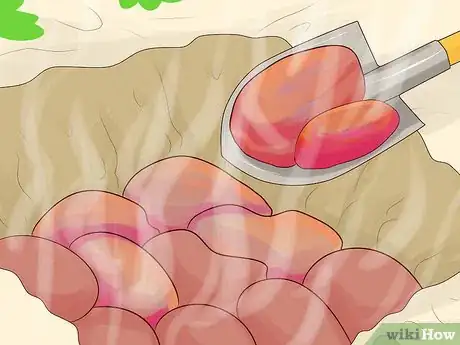
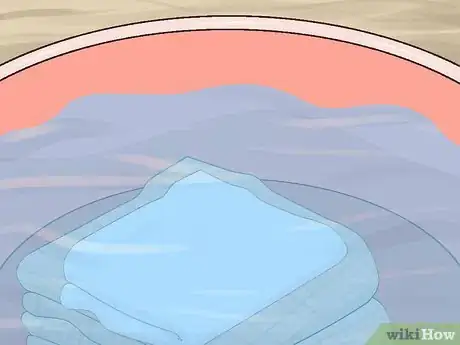
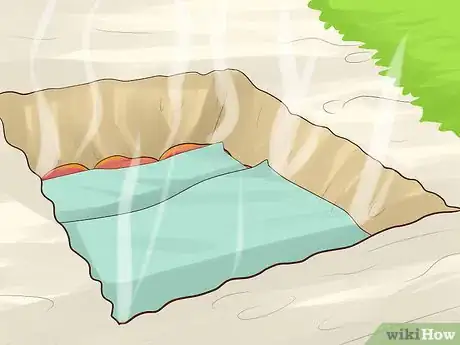
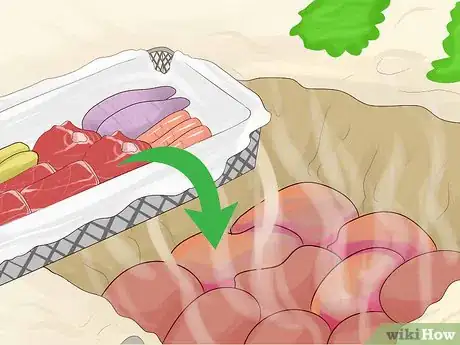
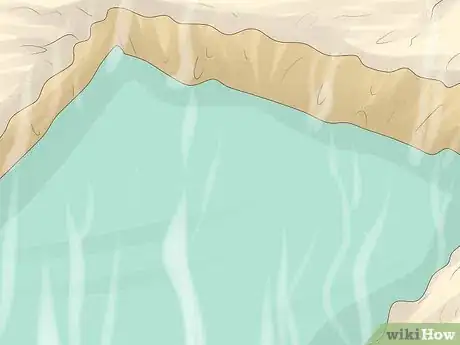
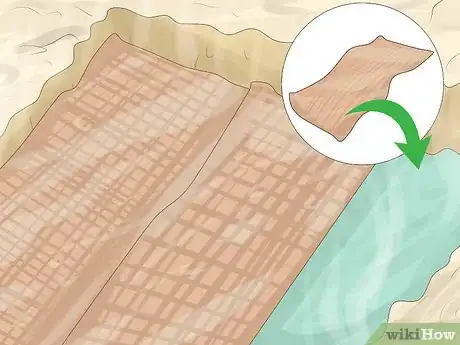
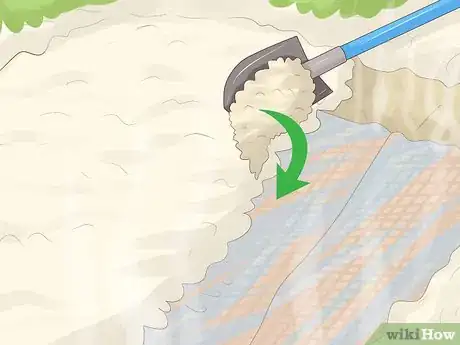
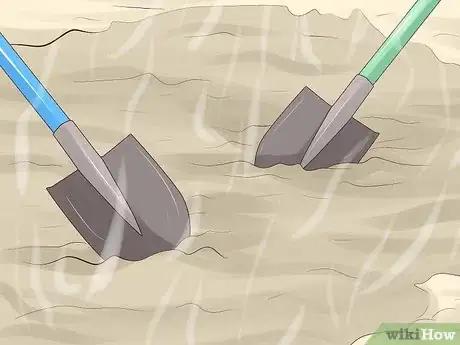
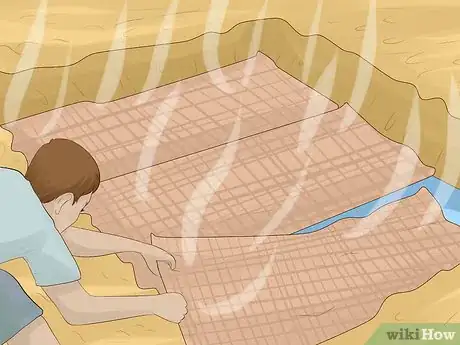

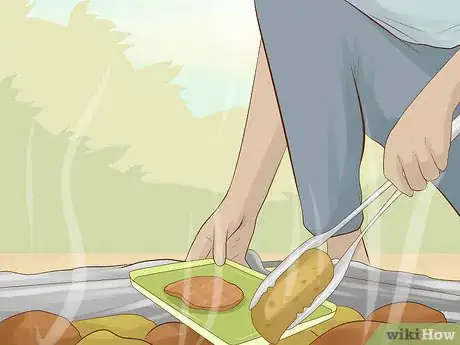

-Step-7-Version-2.webp)




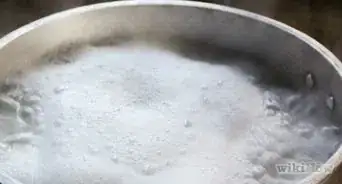
-Step-10.webp)
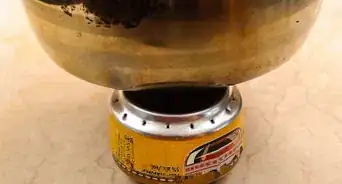










-Step-7-Version-2.webp)

